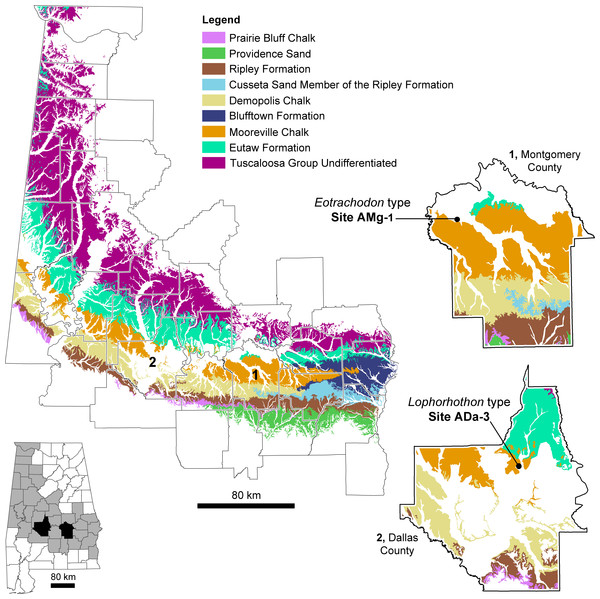
The cranial and postcranial anatomy of the basal hadrosaurid dinosaur Eotrachodon orientalis, from the uppermost Santonian of southern Appalachia (southeastern U.S.A.), is described in detail. This animal is the only known pre-Campanian non-lambeosaurine hadrosaurid, and the most complete hadrosauroid known from Appalachia. E. orientalis possesses a mosaic of plesiomorphic and derived characters in the context of Hadrosauroidea. Characters shared with basal hadrosauroids include a short and sloping maxillary ectopterygoid shelf, caudally prominent maxillary jugal process, one functional tooth per alveolus on the maxillary occlusal plane, a jugal rostral process with a shallow caudodorsal margin and medioventrally facing articular facet, a vertical dentary coronoid process with a poorly expanded apex, and tooth crowns with accessory ridges. Derived characters shared with other hadrosaurids include a circumnarial depression compartmented into three fossae (as in brachylophosaurins and Edmontosaurus), a thin everted premaxillary oral margin (as in Gryposaurus, Prosaurolophus, and Saurolophus), and a maxilla with a deep and rostrocaudally extensive rostrodorsal region with a steeply sloping premaxillary margin (as in Gryposaurus). Eotrachodon orientalis differs primarily from the other hadrosauroid from the Mooreville Chalk of Alabama, Lophorhothon atopus, in having a slender and crestless nasal whose caudodorsal margin is not invaded by the circumnarial depression. Hadrosaurus foulkii, the only other known hadrosaurid from Appalachia, is distinct from E. orientalis in having dentary teeth lacking accessory ridges and a dorsally curved shaft of the ischium. A histological section of the tibia of the E. orientalis holotype (MSC 7949) suggests that this individual was actively growing at the time of death and, thus, had the potential to become a larger animal later in development.
from #MedicinebyAlexandrosSfakianakis via xlomafota13 on Inoreader http://ift.tt/1V32OL3
via
IFTTT
Δεν υπάρχουν σχόλια:
Δημοσίευση σχολίου